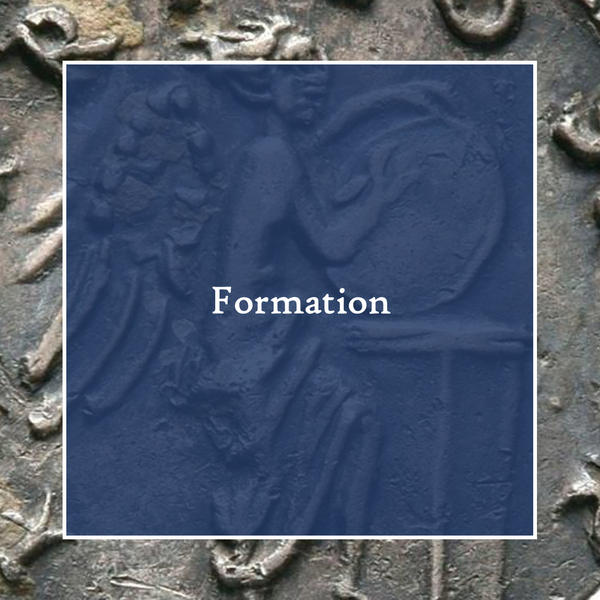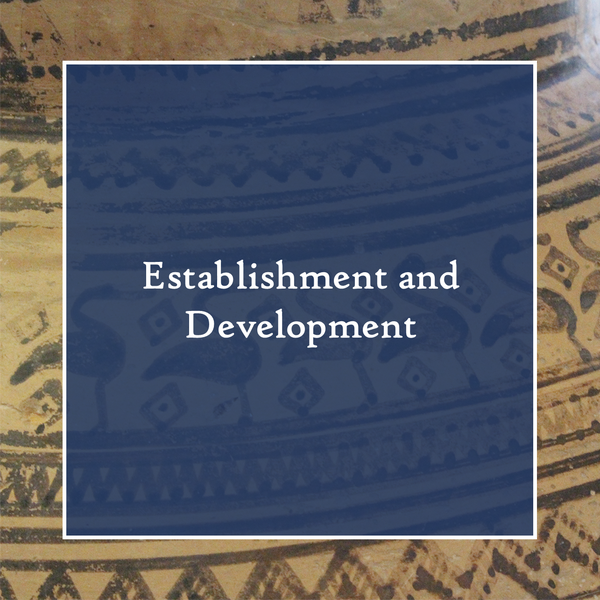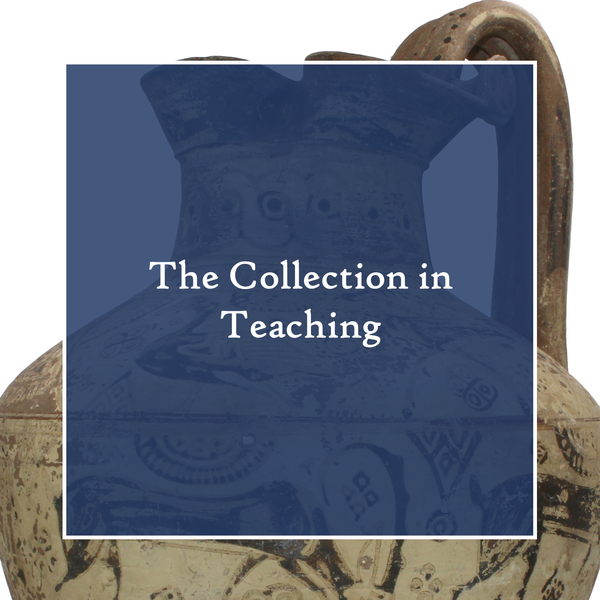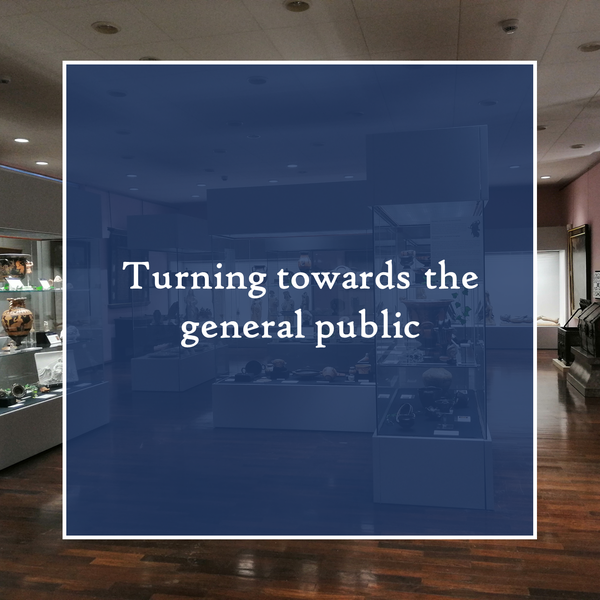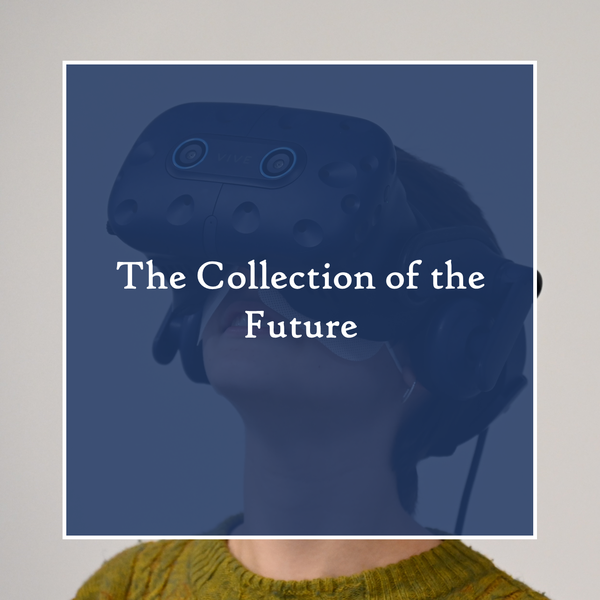About the Collection
|
|
As early as 1826, the "Academic Art Museum" was founded on the Bonn model, which was then renamed the "Art, Coin and Antiquities Cabinet" in 1835. The holdings of the early collection, however, are almost unknown, as all archival documents were destroyed during World War II. In addition to the coin collection dating back to the 18th century, the cabinet combined a collection of plaster casts and - still preserved today - the "Lippert'sche Daktyliothek". Since its establishment, the collection has been steadily expanded: In addition to purchases of originals and casts from Paris, the collection has also grown thanks to a number of donations. In 1835, for example, the Archaeological Institute received casts from the Erbach Collection. Since the end of the 19th century, the collection can be recorded more precisely. Bruno Sauer, who habilitated in Giessen in 1892 and may be regarded as the actual founder of the local Classical Archaeology, took intensive care of the collection in 1897. Since 1898 the collection bore the name "Archaeological Institute". In addition to a planned expansion of the cast collection, which had been housed on almost 300 m² since the move to the so-called "Neue Kollegiengebäude" in 1879, Sauer also systematically built up the collection of originals. |
|
|
The few "instructive shards" Sauer had found were added from 1897 onwards by complete vases and terracotta figurines which he acquired in the art trade. Pieces from the Margaritis, von Leesen and Vogell collections thus came to Giessen. Sauer also obtained important originals from Greece thanks to his brother-in-law, the archaeologist Paul Wolters, and thanks to Hugo Hepding, later director of the University of Giessen, a classical philologist and collaborator in the German Pergamon excavation. In addition, during Sauer's ordinariate, numerous donations expanded the collection (Troy duplicates from the Schliemann Collection, material from Beni Hasan by J. Garstang and from Abusir by the German Oriental Society). As the reconstruction of the collections' history in recent years has shown, a large part of the pre-war holdings were acquired by Bruno Sauer. Under his successor Carl Watzinger, the important collection of Etruscan votive terracotta figurines of the Königsberg anatomist Ludwig Stieda came to Giessen. |
|
|
For a long time after World War I, the collection was only sporadically extended by individual sherds that the chairholders brought back from their travels. Under Margarete Bieber, the plaster cast collection in particular was expanded and used intensively for teaching and research purposes. It was not until 1939 that Willy Zschieztschmann was able to add several Attic red-figure vases and an important Faliscan amphora to the collection. It is above all thanks to Zschietzschmann that the collection of originals survived the severe destruction of Giessen during the war almost undamaged. The coin collection was also preserved in its entirety. Only the cast collection was almost completely destroyed on 6 December 1944. In the turmoil of the post-war years - the Institute itself was only reopened in 1964 as a "Professorship for Classical Archaeology" - the collection was gradually dispersed. It was not until the 1970s that the antiquities were collected again by Hans-Günther Buchholz and his assistant at the time, W. Hornbostel, and recorded in an inventory by F. W. von Hase. Buchholz then published many of the antiquities for the first time and expanded the collection again in accordance with his research interests: numerous Cypriot antiquities have since enriched the collection, along with Late Classical vessels and prehistoric objects. The sherd collection has also grown considerably. |
|
|
Wolfram Martini, professor and head of the Collection of Classical Antiquities from 1985-2007, has ensured that the collection and its most important pieces are now open to the public. The original collection has been on display there since 1987, and part of the coin collection on loan since 1991. Numerous new acquisitions have been added since then, above all Attic, South Italian, and Etruscan vases, but also Anatolian pottery and seals, which - since the Collection of Classical Antiquities does not have its own budget - came into the collection with the help of patrons or as donations. They testify to the close ties between the public in Giessen and the Collection of Classical Antiquities at Justus Liebig University. Since 2006, special exhibitions have been held on a regular basis - usually two per year. Since 2009, the university has had a custodian who looks after the collection and curates the exhibitions. Special attention is also paid to involving students in the preparations, so that the Collection of Classical Antiquities is a "teaching collection" in the most comprehensive sense, in which practical museum experience and public relations are taught alongside specialist knowledge.
|
|
|
Since digital technologies have played a central role in the transfer of knowledge in museums for several years, Classical Archaeology, under the direction of Prof. Dr. Katharina Lorenz, has been increasingly using digital techniques in exhibitions since 2018. This innovative and future-oriented approach to the public presentation of the university's collection benefits museum visitors on the one hand, who now also have remote access to a growing number of digitised objects of the Collection of Classical Antiquities, and students in the Department of Classical Archaeology on the other: Guided by the curator Dr. Michaela Stark, students acquire not only solid knowledge about the presentation of exhibits in a museum context in seminars and exercises, but also in-depth skills in the use of digital tools in the context of designing interactive visitor experiences. Practical learning and the application of digital methods thus equip students with core competencies that are essential for later career entry. |
|
Publications on the history of the collection
|
|
|
Annual reports from the Collection of Antiquities can be found in Mitteilungen des Oberhessischen Geschichtsvereins. |
|

